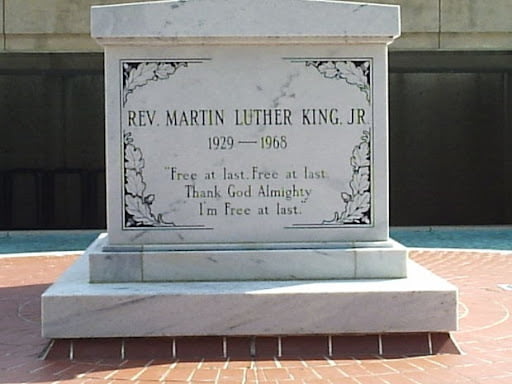This Monday is not just another school day off or a day where parking is free downtown, Monday is Martin Luther King Jr. (MLK) Day. Dr. King is most commonly known for his “I Have a Dream” speech which is memorably idolized to this day. He was arguably the most influential equal rights spokesman of his generation. According to the National Association for the Advancement of Colored People (NAACP), Dr. King was assassinated on April 4th, 1968 at the Lorraine Motel in Memphis, Tennessee — at the time he was only 39. The day is observed to remember the passing of the more influential, nonviolence-protest advocate of the time.
Dr. King’s goal was to create equal justice for all. In his eyes, there needed to be a progression towards equality at any cost and he fought for that until death. A quote by Dr. King better explains his mission for progression, “If you can’t fly, then run. If you can’t run, then walk. If you can’t walk, then crawl, but by all means, keep moving” (Martin Luther King Jr.). The objective was a racial equality breakthrough.
According to History.com, Dr. King was arrested on April 12th, 1963 in Birmingham, Alabama. He was arrested for leading a Good Friday demonstration. The demonstration was meant to bring attention to the unacceptable, racially targeted treatment by racist residents of Birmingham. The Birmingham arrest — being Dr. King’s 13th arrest — was the most ‘important’ arrest of this personal and professional career. While in confinement, Dr. King was denied outside access to lawyers or even to see his wife, until President John F. Kennedy intervened. He wasn’t immediately released, but Kennedy shortened his stay. In the time of imprisonment, Dr. King wrote up a 7,000-word letter to explain his innocence and nonviolent actions displayed in Birmingham. The “I Have a Dream” speech is the primary accomplishment schools recognize Dr. King for, but his work in Birmingham was just as revolutionary to people seeking racial equality.
Another historical figure that Dr. King served with in search of equality, was Rosa Parks. In 1955, she denied her seat to a white passenger and was promptly arrested. There was then a boycott on all Montgomery buses called The Montgomery Bus Boycott. Dr. King then entered the spotlight in response to the racial discrimination Parks faced. Because of his stance, he became a target for white supremacists and in January of that year, his house was firebombed in response to his stance with Parks. Yet another influential achievement that schools neglect to discuss with students for unknown reasons.
Martin Luther King Jr. is a memorable figure that never gave up in the face of challenging racial turmoil. He persisted and inspired change. At the time, his viewpoints were seen as radical, but he arguably started the movement towards equality for the Black Community. Dr. King was and is a figure of great influence and is recognized every year for his revolutionary movement towards civil rights.




